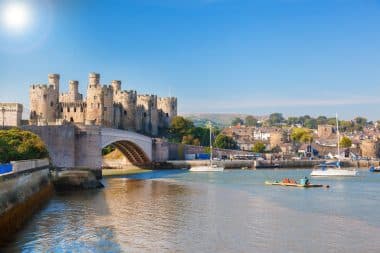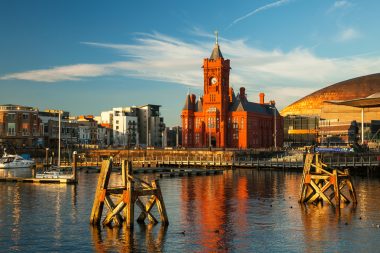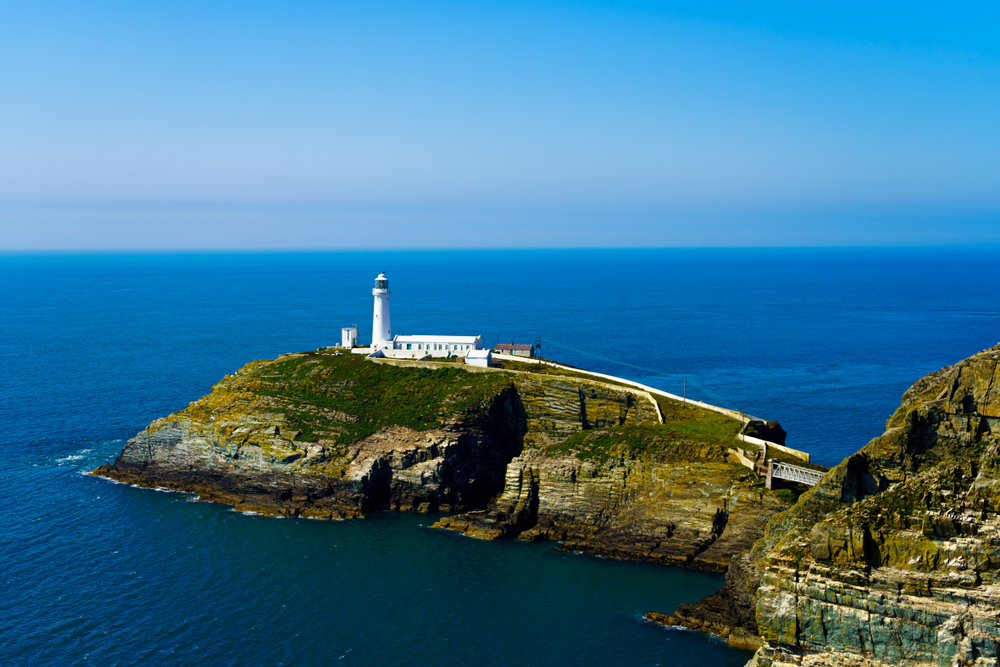Wales borders England to the east and the Irish Sea to the west. The Welsh are known for their hospitality and tranquillity. In addition, many Welsh landscapes are closely linked to the legends of King Arthur. The flag of the Welsh shows a red dragon. The legend tells of a fight between a white and a red dragon. The red dragon, despite its initial inferiority, would emerge victorious from the battle. It has been the symbol of Wales for hundreds of years. It may have originated as early as the Roman occupation period.
Attractions in Wales
Conwy Castle

Cadair Idris
If you are in the mood for breathtaking, wide landscapes, you should not miss the Cadair Idris, in whose basin there is a lake. At the foot of the mountains was also the castle of Castell y Bere, of which only the foundation walls remain today. The ridge in Snowdonia National Park owes its characteristic shape to a glacier that formed during the last ice age. The name Cadair Idris means something like Idris’ chair. Legend has it that after a sleep on the slopes of the mountain, you wake up either as a poet or as a madman. Provided you take this nap alone.
Bodnant Garden
Nowhere else in the world is garden art celebrated as much as in Great Britain. Fabulous landscaped gardens are typical of the island. Bodnant Garden, on the banks of the River Conwy, is one of the most popular gardens in Wales. Over several generations, it has been further developed to its present form. Especially in spring, when the garden is in full bloom, it is worth a visit. The 32-hectare area is divided into two parts. Near the manor house, the garden was created with free terraced gardens, while “The Dell” – the lower area – captivates with its overgrown appearance. Even in winter, the garden offers a beautiful source of peace and the winter garden is a very special jewel in the cold season.
The Cathedral of St. Davids
St. David’s Cathedral is one of the oldest complexes in Great Britain. The monastery, on whose walls the cathedral was finally built, was founded as early as the 6th century. The town of St. Davids on the Welsh coast was granted city rights due to the cathedral, making it the smallest town in Great Britain.
The cities of Wales
Cardiff

Swansea
The second largest city in Wales is Swansea or – as it was probably called in the beginning – Sveinns ey. Swansea was originally built by the Normans. Despite fortifications, the city was conquered several times by rebellious Welsh. From the beginning, wool and leather were processed in Swansea and exported to England among other products. This did not change when the metal industry gained in importance in the 17th century. Due to its coastal location, the city became a popular destination for tourists after World War II. Landmarks such as Clyne Gardens or Swansea Castle are good places to visit. For those who want to learn more about Wales’ industrial history, head to the National Waterfront Museum. Very close to Swansea is also the ruined castle of Oystermouth Castle.
Newtown
Newtown is especially recommended for those who appreciate the historic urban flair. The market, which is held every Tuesday in the city, has its beginnings as early as the late 13th century. From traditional food to fashion, there is now everything your heart desires. The wool and textile trade, which developed in the 16th century, is still remembered today by the city’s textile museum. Newtown’s best-known son is undoubtedly the social reformer Robert Owen, who is honored with the monument and museum.
Portmeirion
This place is something very special and could just as well be listed among the sights, because it doesn’t remind you of England at all. Rather, you feel like you’ve been transported to the south. More precisely, to Italy. In fact, the architect Sir Bertram Clough Williams-Ellis wanted to build his own Portofino in Wales. In addition to a hotel, the artificial village also has small shops, cafés and restaurants. Just 1.6 km away is a station on the historic Ffestiniog Railway.


